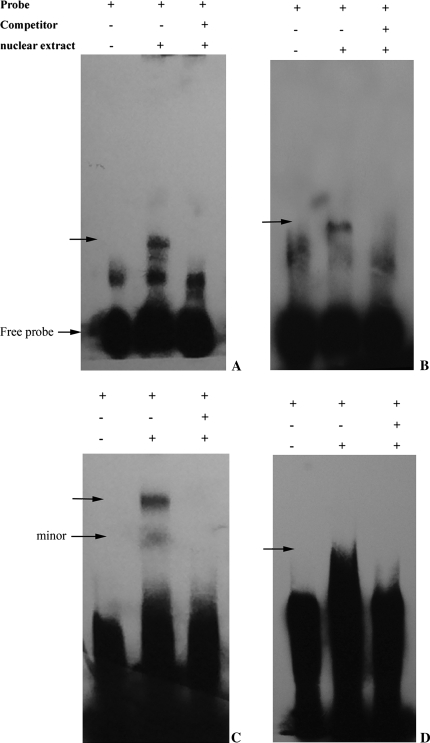Fig. 8.
EMSAs of nuclear proteins from watermelon leaves with the synthetic oligonucleotides. Binding of nuclear proteins from watermelon leaves to the labelled probes. (A) Identification of nuclear proteins that bind specifically to the 30 bp fragment from −989 to −959 (PN1) of the AGPL1 promoter. (B) Gel shifts using a 41 bp fragment from −899 to −859 (PP1) representing the positive element and leaf nuclear extracts. (C) Gel shifts using a 41 bp fragment from −464 to −424 (PN2). (D) Gel shifts using a 53 bp fragment from −419 to −367 (PP2). The nuclear extract was prepared from watermelon leaves as described in Materials and methods. A gel retardation assay was performed using a DNA fragment as a probe, as described in Materials and methods. The DNA−protein complexes in (A), (B), (C), and (D) were formed in the presence of 1 μg of non-specific competitor, poly dI:dC–dI:dC. All of the probes were incubated in the presence (lane 2 and lane 3) or absence (lane1) of nuclear extract. Competitors were added in 200-fold molar excess (lane 3). The arrow indicates the position of DNA–protein complexes. The gel retardation assay was performed as described in Materialsand methods. All were electrophoresed in a 6% polyacrylamide gel.

